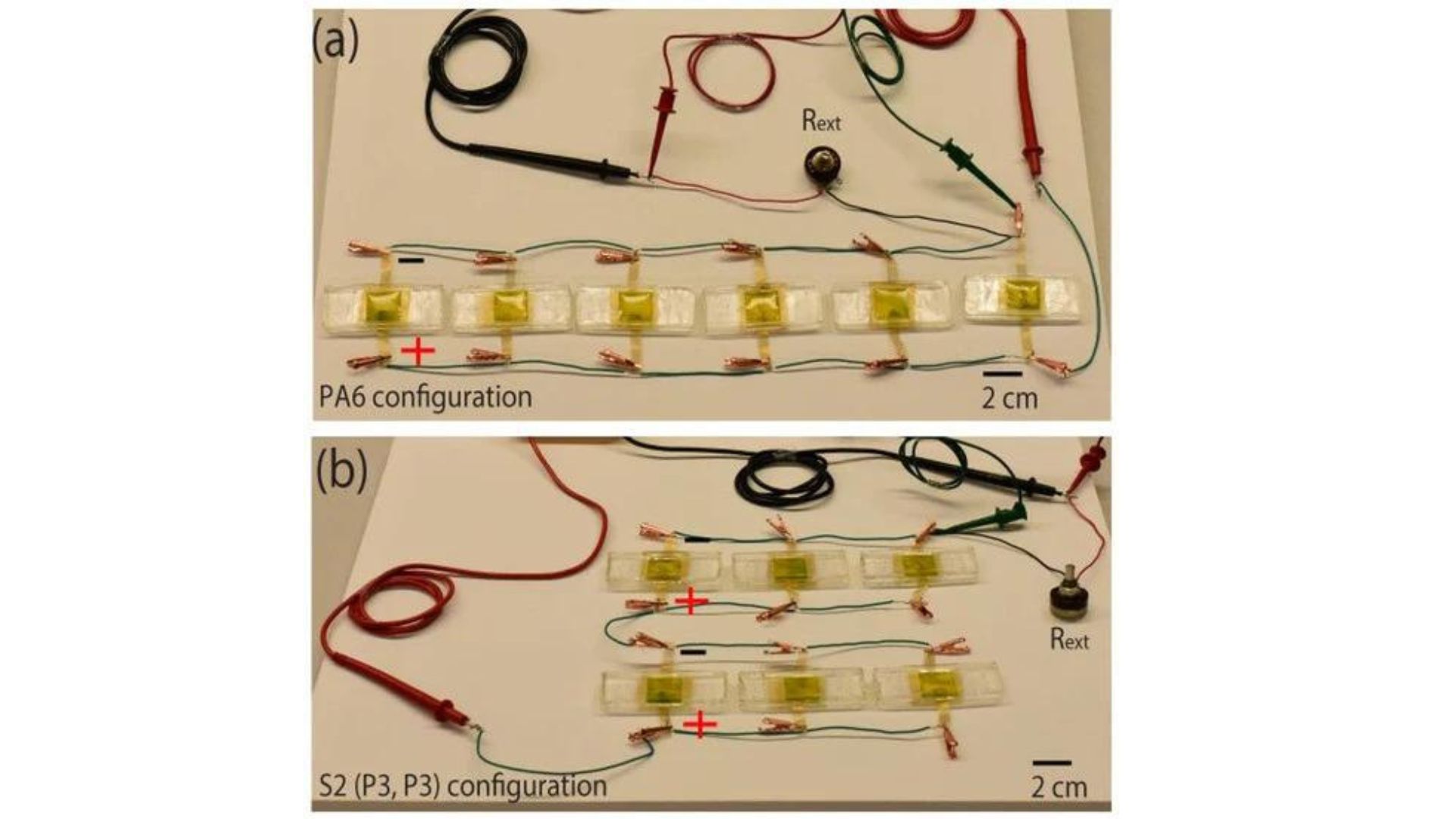The energy generated is capable of powering low-voltage devices like Internet of Things sensors.
Updated: Jun 17, 2024 07:46 AM EST

Algae’s photosynthesis holds untapped power potential.
Researchers at Concordia University in Quebec have developed a way to harvest energy from algae’s photosynthesis process, aiming to offer a sustainable energy source.
The team at the University’s Optical-Bio Microsystems Lab generates energy by suspending algae in a specialized solution and housing it in small power cells.
Their model captures electrons to generate electricity, making it not just zero-emission but a negative carbon emission technology.
According to researchers, when set up properly, their micro-photosynthetic power cells (µPSC) cells have the capacity to produce enough energy to run ultra-low- and low-power gadgets, like Internet of Things (IoT) sensors.
“The integration of µPSCs into the realm of sustainable energy sources represents a significant stride forward, potentially impacting various sectors reliant on low-power solutions,” said the team in their research paper.
Harnessing algae power
In a µPSC setup, a proton exchange membrane in the form of a honeycomb divides the anode and cathode chambers of the micro photosynthetic power cell.
The researchers constructed microelectrodes on both sides of the membrane to gather the charges that the algae release during photosynthesis. Each chamber is quite small, measuring just two centimeters by two centimeters by four millimeters.
The anode chamber contains a two-milliliter solution in which the algae are suspended, while the cathode is filled with potassium ferricyanide, an electron acceptor of some kind.
According to researchers, when the algae start to emit electrons due to photosynthesis, the electrons are gathered through the electrodes in the membrane and conducted, resulting in a current.
Protons, however, cross the membrane and enter the cathode, oxidizing and reducing potassium ferrocyanide. The process also functions without direct sunlight, albeit at a lower intensity.
“Just like humans, algae are constantly breathing — but they intake carbon dioxide and release oxygen. Due to their photosynthesis machinery, they also release electrons during respiration.” said Dhilippan Panneerselvam, a PhD candidate at the University and the study’s co-author, in a statement.
“The electricity generation is not stopped. The electrons are continuously harvested,” he added.
Efficient and eco-friendly
Researchers tested the performance of micro-photosynthetic power cells (µPSCs) in various configurations. In one set, configurations included two µPSCs in series with three sets in parallel, three in series with two sets in parallel, four in series with another two in series and both sets in parallel, and five in series with one in parallel.
According to researchers, performance variations were normalized for voltage, current, and power due to fabrication differences and changing conditions.
The tests showed that combining series and parallel arrays of micro-photosynthetic power cells (µPSCs) generates more power than using only series or parallel connections.

The team acknowledges the system’s inability to compete with alternative power generation methods, such as solar cells. One micro photosynthetic power cell has only a maximum terminal voltage of 1.0V.
RECOMMENDED ARTICLES
However, with sufficient research and development, including AI-assisted integration technologies, researchers believe the technology could become a viable, affordable, and clean power source in the future.
The team highlights that their system does not use any hazardous gases or microfibers required for the silicon fabrication technology that photovoltaic cells rely on.
“Furthermore, disposing of silicon computer chips is not easy. We use biocompatible polymers, so the whole system is easily decomposable and very cheap to manufacture,” said Muthukumaran Packirisamy, professor in the Department of Mechanical, Industrial and Aerospace Engineering and the paper’s corresponding author.
The details of the team’s study were published in the journal Energies.
The Blueprint Daily
Stay up-to-date on engineering, tech, space, and science news with The Blueprint.
ABOUT THE EDITOR
Jijo Malayil Jijo is an automotive and business journalist based in India. Armed with a BA in History (Honors) from St. Stephen’s College, Delhi University, and a PG diploma in Journalism from the Indian Institute of Mass Communication, Delhi, he has worked for news agencies, national newspapers, and automotive magazines. In his spare time, he likes to go off-roading, engage in political discourse, travel, and teach languages.
POPULAR ARTICLES
RELATED ARTICLES
This post was originally published on 3rd party site mentioned in the title of this site






